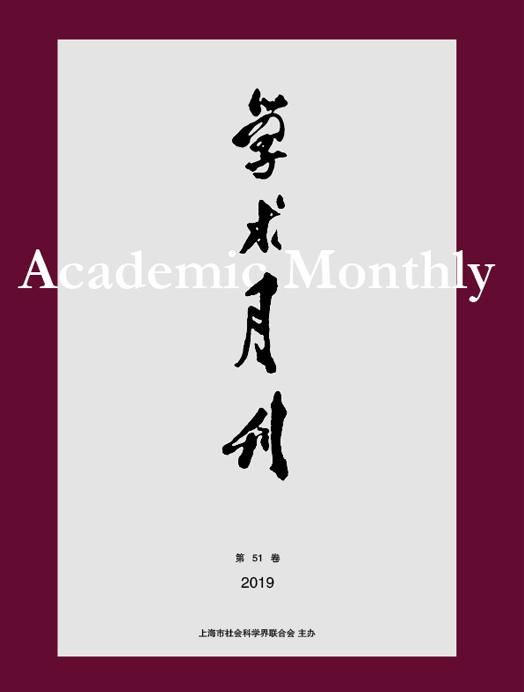Citation:
Heng QUAN. Analysis Framework of World Economy Growth: New Variables and Their Innovative Development[J]. Academic Monthly, 2022, 54(7): 43-52.

Analysis Framework of World Economy Growth: New Variables and Their Innovative Development
-
Abstract
The practices of world economy growth are undergoing profound changes. The traditional theories and methods of economy growth that based on the theory of production factor function are facing great challenges brought by a series of new practical changes. Major new variables and factors, such as the global pandemic of the COVID-19, new changes in international investment and trade rules, the regionalization of the global economy, the spillover effect of major countries’ economic policies, the Belt and Road initiative, the new development pattern of double cycles in China, the implementation of the global carbon reduction strategy, big data and AI, are profoundly impacting and changing the traditional world economy growth pattern, and also objectively affecting and reshaping the world economy’s speed, total amount, and resource allocation structure, enterprise organization, industrial structure, regulation structure and its new mechanism of total factor productivity; at the same time, all these new factors actually have potentially promoted the innovation and development of the theory of world economy growth. Theoretical research and innovative development need to introduce these new variables and factors into the traditional analysis framework to build and form a unified and comprehensive new analysis framework for world economy growth. This is a new direction and potential for the innovation and development of world economy growth theories, including national economic development theories.
-

-
References
-
Access
-
-
[1]
Hutao YANG
. Construction of the New Development Paradigm and Development of Digital Economy: Internal Logic and Policy Focus. Academic Monthly,
2021, 53(12): 60-73.
-
[2]
ZHOU Tianyong
. A New Mathematical Logical Framework for Explaining China’s Economic Growth—— Analytical Approaches Based on Distortion Differences in Dual-track System. Academic Monthly,
2023, 55(11): 39-51.
-
[3]
Shouqiu CAI
. New Development in practice and Theory of Environment Right. Academic Monthly,
2018, 50(11): 89-103.
-
[4]
Pingfang ZHU
, Ruoqing XIE
, Panpan LIU
. A Study on the Relationship between Maximum Power Load and Economic Variables. Academic Monthly,
2020, 52(2): 44-57.
-
[5]
ZHANG Guangting
. The Belt and Road Initiative and Theoretical Innovation in International Politics and Economy —— An Analytical Framework. Academic Monthly,
2023, 55(9): 43-57.
-
[6]
DENG Zhituan
. New Development Ideas of Urban Economy in the Era of Innovation—— The Theoretically Explain and Empirically Test of “Urban Amenity Attracting Talents”. Academic Monthly,
2023, 55(10): 61-74.
-
[7]
Baoping REN
. The Logic of China’s 70-Year Economic Development and Its Innovation in the Development Economics. Academic Monthly,
2019, 51(8): 27-36.
-
[8]
. Theoretical Interpretation and Practical Orientation of China’s Economy from High Speed Growth to High Quality Development in New EraRen Baoping. Academic Monthly,
2018, 50(03): 66-74.
-
[9]
ZHANG Xinyu
. Policy Dividends, Geographical Endowments and Regional Disparity of Economic Growth —— Evidence from Development Strategy of Yangtze River Economic Belt. Academic Monthly,
2023, 55(7): 46-60.
-
[10]
Zhiping HU
. Political Economy of the Change of Rural Public Service Supply in China: Development Stage and Government Behavior Framework. Academic Monthly,
2019, 51(6): 53-63.
-
[11]
Jianhua ZHANG
, Yuwen ZHOU
. Theoretical Innovation in Development Economics Based on China’s Practices. Academic Monthly,
2021, 53(11): 39-48.
-
[12]
Biliang LUO
. Growth, Transformation and Ecological Development. Academic Monthly,
2021, 53(5): 54-64.
-
[13]
LI Youmei
. New Public Nature and Paradigm Innovation of Theory of Chinese Society Transformation. Academic Monthly,
2024, 56(2): 5-20.
-
[14]
,
. . Academic Monthly,
2017, 49(02): 96-105.
-
[15]
Liangping SHI
, Suyun WANG
, Jingjing WANG
. Economic Analysis from Stock to Flow: On the Construction of Theoretical Framework of Flow Economics. Academic Monthly,
2019, 51(1): 50-58.
-
[16]
Jing GE
, Ruiming LIU
. China’s Economic Growth, Fluctuation and Regional Disparities. Academic Monthly,
2022, 54(2): 63-78.
-
[17]
,
. . Academic Monthly,
2016, 48(01): 87-100.
-
[18]
,
. . Academic Monthly,
2016, 48(06): 37-52.
-
[19]
. . Academic Monthly,
2016, 48(05): 63-71.
-
[20]
,
,
. . Academic Monthly,
2016, 48(09): 49-58.
-
-



 沪公网安备 31010102003103号
沪公网安备 31010102003103号 DownLoad:
DownLoad: